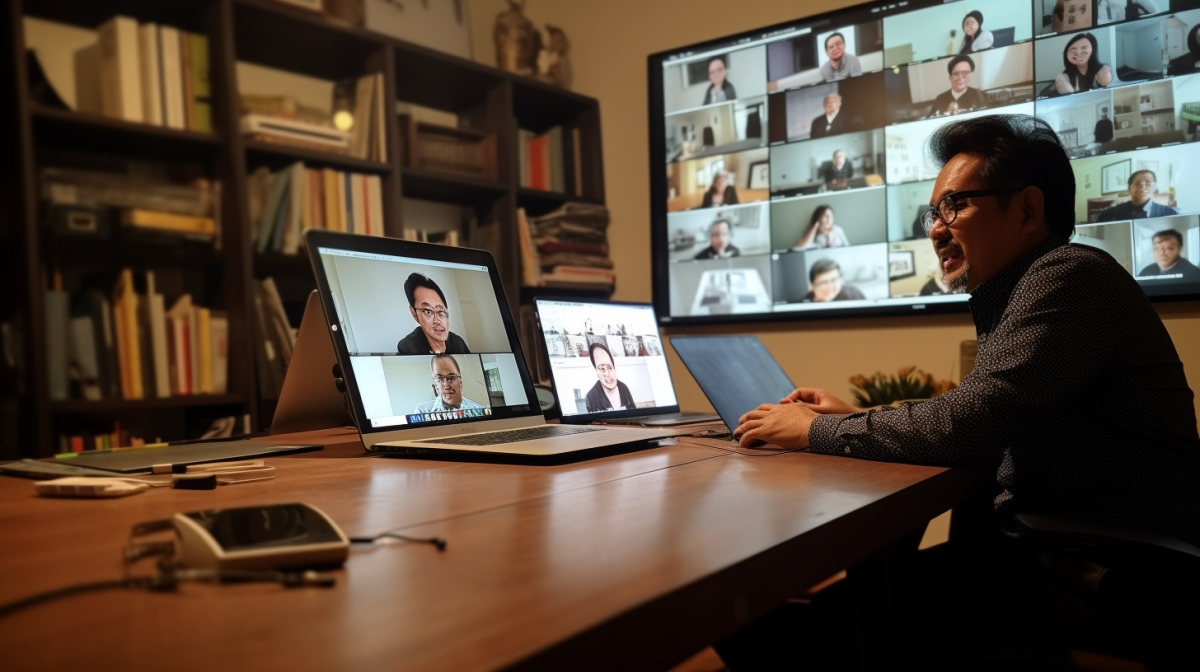


.png)

.png)
.png)
.png)








.jpg)
.jpg)
.jpg)


Over the years, remote work has seen a steady rise around the world. From giving employees the flexibility to work beyond the four corners of the office to enjoying a healthier work-life balance, the perks of remote work outweigh the cons (and even the pros of on-site work).
With the demand for remote jobs across industries, companies must recalibrate their hiring strategies and processes to suit this work arrangement. Employers must assess not only a candidate’s credentials and qualifications, but also their intercultural skills, ability to work with minimal supervision, and even their computer’s technical specifications.
While employing new hires for remote work comes with unique challenges, we created this guide to assist you with the remote employee process.
Before anything else, let's look at some stats.
Since the pandemic, this setup has been seeing an upward trend. Globally, only 20% of professionals were in a remote work arrangement in 2020. However, by 2023 and 2025, this percentage rose to 28% and 48%, respectively.
And based on Upwork's Future Workforce Report, this trend shows no signs of stopping. By 2028, 73% of all teams will have remote workers. Predictions made by the World Economic Forum also revealed that there will be an estimated 92 million global remote digital jobs by 2030.
Buffer's survey also shows that remote work is becoming the new normal. 98% of respondents said they prefer a remote work setup throughout their careers, even from time to time. These figures show that remote work is here to stay. You'll have little to no regrets in choosing a working setup that won't die out anytime soon. Most of all, it will benefit you, your business, and your future team.
Every business owner knows it's critical to hire the right people. Your team will be crucial in helping you grow your medium- or large-sized business. However, screening candidates for a remote team comes with challenges:
Don't worry, though. We'll share a simple screening process below as well as an alternative solution in the next few sections.
The goal of screening applicants is to find the best candidates suited to work in a remote environment. Aside from embodying the right experiences, skills, and qualities, they must also be comfortable in your work setup.

To help you get started, here are five steps you can follow to hire the right team members for any remote job role.
Diving right into a global talent pool without a comprehensive job description is asking for tons of work. Before posting anything online about the job role, make sure you know everything you need to find in a job applicant. Here's a checklist of some essential information to include in a job description for a remote role:
Aside from these items, you also need to cover the general information in job descriptions. It includes:
Check out this example of company benefits found in all our job listings:

With these items, when a job seeker sees your job description, they can do a self-evaluation first before sending their application.
Pro Tip: Ask for a cover letter!
It would show you how an individual communicates in written form, which you'll soon see is a crucial skill in a remote setting.
After going through the applications you received, conducting initial interviews is the next step. It's where you assess your job applicants if they are culturally compatible in your company. Plus, here's your chance to ask them about the information they stated in their resume.
On top of the typical interview questions like "Tell me about yourself" and "What are your strengths and weaknesses," you can also ask them about their capabilities to work in a remote environment, such as:
An initial interview for a remote role is usually done via email or audio call. With email, you can see if your applicants can write coherently and respond in a timely way. On the other hand, an audio call would allow you to assess their verbal ability and listen if they can coherently speak out their ideas.
Either way, an initial interview is usually short. But with the right questions, you can further filter your job candidates and take them to the third step.
Job seekers tend to falsify or exaggerate the contents of their resume. According to the Job Search Trends Report by FlexJobs, 33% of participants in the United States revealed that they were dishonest in their cover letter or resume.
To avoid falling victim to exaggerations or false claims, you can assess your job candidates' skills with online tests and test projects. You can instruct your potential employees to take online tests that assess their soft skills, such as self-motivation, self-confidence, and communication — which are the competencies necessary to thrive in a remote work setup.
MindTools has a free index of self-tests that you can use. Another way to assess soft skills is by reviewing a job candidate's cover letter. You can see how a job candidate writes, which can be a reliable indicator of their communication skills. Plus, a cover letter can also show you how well they know your business and the role they want to fill.
For hard skills, you can give your applicants a test project. Since it's close to the real-world scenario of a remote setup, it can indicate how they would perform as part of your remote team. When you do this, make sure they have a deadline relevant to the job role's day-to-day tasks.
And since you're looking for an independent employee, you'd want to give them space unless they ask you questions. Remember, for both hard and soft skills tests, you'll need to have a benchmark to determine easily which among the candidates have met your standards.
When you're hiring remotely, the closest thing you can have to a personal interaction is a video interview. It helps you build a fuller picture of a candidate. Even with your screens getting in the way, a video interview allows you to check their body language. Whenever an applicant answers your question, you can see from their facial expressions if they're honest and genuine.
Plus, you can see how they work under pressure, considering the stress that applicants usually experience in this part of the screening process. Moreover, it's your opportunity to ask them questions more relevant to the position.
Compared to the initial interview, a video interview lets you dive into the job role's nitty-gritty. Aside from that, here's another chance to ask more questions relevant to the remote work setup:
At first, doing a background check sounds like cyber-stalking. However, we live in the digital era, where most people regularly update their feeds and timelines. With that said, you can't just ignore your potential employee's social presence. Their activities on their social media accounts are a hint of their behavior outside work.
Their LinkedIn account has more valuable information about work; it usually contains their past work experiences. But aside from that, you can also see their references, to whom you can reach out should you need to confirm details on their resume.
On top of that, you can also read recommendations about them. This section on LinkedIn allows you to see what their colleagues think of them, which can give you further insights into your candidate.
On the other hand, Twitter, Facebook, and Instagram can become your sources of more candid activities. In these sites, individuals usually hold no filter and post whatever they want. These can pave the way for you to assess their behavior and personality and determine how they would fit your work culture. After this step, you're a job offer away from hiring your first remote employees.
The nature of the test project depends on the role. If it’s for a content writing or copywriting role, then a grammar and article writing test would be good. Likewise, a graphic design role could benefit from test tasks that involve creating a logo or visual social media content.
Test tasks, however, should closely mimic your company’s usual real-world tasks, so the new hires have a sneak peek of the type of work they’ll perform on the job.
To assess culture fit, ask behavioral questions. These questions are designed to probe deep into a candidate’s communication style and their ability to adapt to new systems, approach disagreement, respond to constructive criticism, and maintain productivity.
Detailed, authentic answers that align with your company values and expectations indicate that a candidate may be a good culture fit for your organization.
Here are tell-tale signs of a scammer or fraudster:
To protect yourself from scammers, conduct intensive background checks, require video interviews, and make the candidate complete a test project.
Yes! BPO companies have access to a large pool of talent. These companies also have expert recruiters who thoroughly vet new hires, making sure that all onboarded employees can perform their job responsibilities with integrity.
Some BPO firms even allow their clients to participate in the remote employee screening process, so they can work with the best team members.
As an owner of a medium- or large-sized company, it can be hard to keep track of everything, from human resources to operations.
Now, here's the alternative solution: offshore outsourcing.
Working with the best offshore outsourcing companies, such as KDCI Outsourcing, can help you build the right offshore team. With our customized offshore strategy and streamlined hiring process, you can count on us to match you with top Filipino remote workers for any of the following departments:
Thus, we can guarantee that you'll only get the best team suited to your remote work setup. Partner with us today!